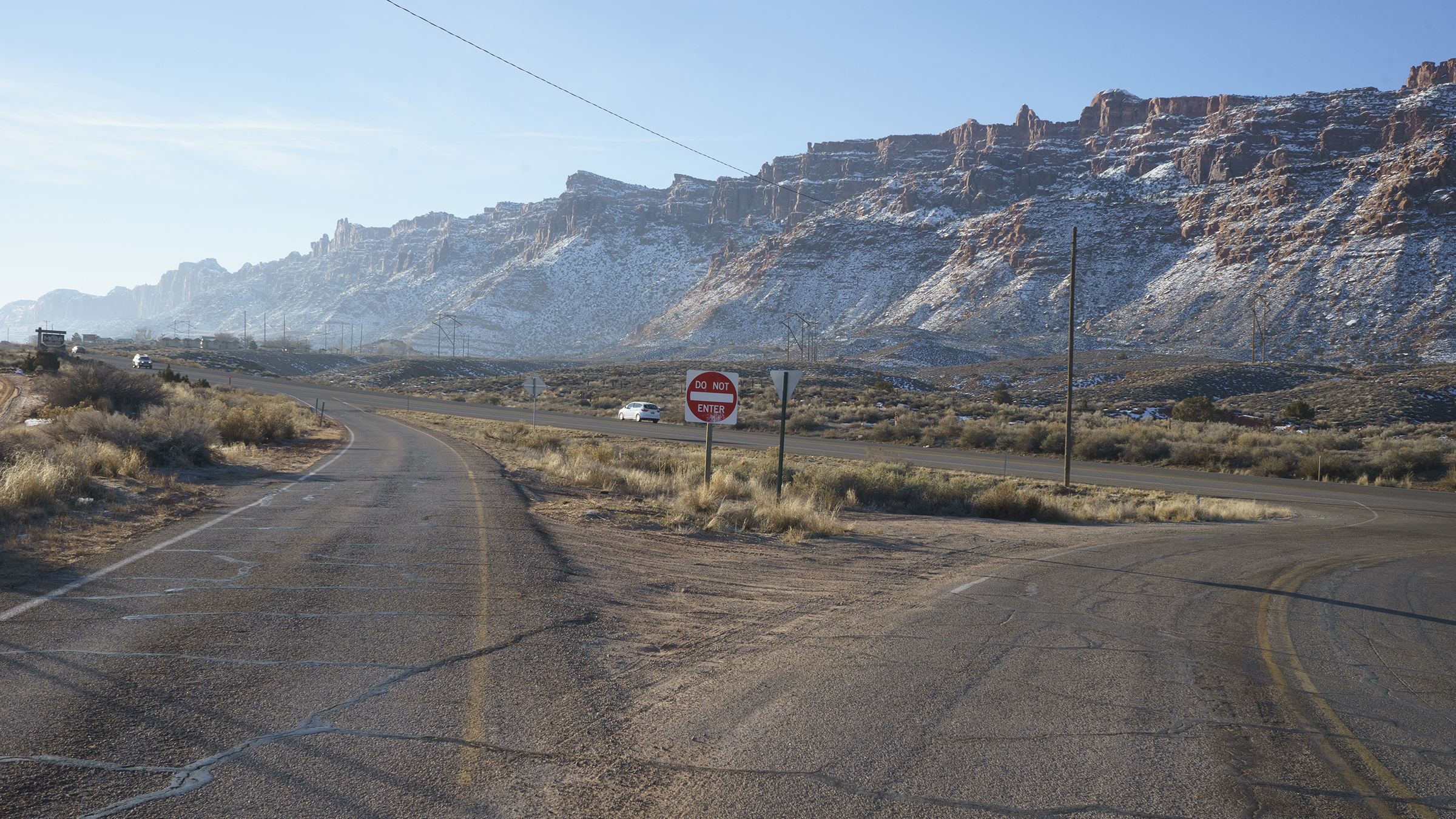Some information may be outdated.
Pedestrians and bicyclists will be able to travel more safely from the south side of town to the city center, if the Utah Department of Transportation approves a request for federal funding to build an underpass at the intersection of Mill Creek Drive and U.S. Highway 191.
The City of Moab has already been approved for $1 million in federal funding in 2017 to make improvements at the intersection. If it’s awarded an additional $550,000 in UDOT grant funding, the city will build an underpass for pedestrians and bicyclists.
“We encourage all types of transportation,” Moab Mayor Dave Sakrison said. “We’re trying to facilitate and meet those needs.”
Chile Pepper Bike Shop owner Tracy Reed said it makes “perfect sense” to build a pedestrian underpass at the intersection, since it would link the future site of Utah State University-Moab’s new campus to the other side of the valley.
“Once the university is open, we don’t want pedestrians and bicyclists crossing that busy highway; it will be a safe corridor for nonmotorized users,” Reed said. “It’s a great plan.”
The project would also include connections to proposed sidewalks on Mill Creek Drive, a regional path along U.S. Highway 191, and future paths and sidewalks south of the highway.
Currently, the property south and west of the Mill Creek Drive-Highway 191 intersection is undeveloped. However, USU-Moab plans to build a new campus at the site.
The existing campus is located in four downtown buildings that were purchased over the years, USU-Moab Dean Steve Hawks said. There is no room for expansion at that location, and the university has envisioned a new and larger campus for years, he said.
“We purchased land a few years ago directly west of the intersection,” Hawks said. “So we’re moving in that direction. The first thing that has to happen is a redesign of the intersection – the city and county have been working toward that for a number of years.”
Installing a pedestrian and bicycle underpass at the intersection will create an alternate route into town, resulting in less traffic congestion, Hawks said.
“It’s a huge asset to any development that happens on the south side – not just for USU,” Hawks said.
“We’re hoping in two or three years we will have the resources to move ahead. We’re still raising funds for building. A key step is developing the infrastructure – roads, utilities, Internet connection – so there are a lot of logistical pieces.”
The Utah Department of Transportation administers federal aid funding and grants for local agencies each year. The initial federal funding is to go toward realigning and creating a “more favorable geometry” to the intersection, making it safer for motorists, Moab City Engineer Phillip Bowman said. The improvements will also prepare the intersection for future traffic light installation.
Money for the underpass would come from UDOT’s Transportation Alternatives Project, which focuses on pedestrian and bicycle infrastructure to encourage alternative forms of transportation.
Bowman said UDOT will review and make its decision by spring or early summer for funding that would become available in fiscal year 2017. The design phase will take about a year, with construction following immediately after, he said.
The Transportation Alternatives Project provides funding for programs and projects defined as transportation alternatives, including on- and off-road pedestrian and bicycle facilities, infrastructure projects for improving non-driver access to public transportation and enhanced mobility. It also funds community improvements, environmental mitigation, the Recreation Trails Program, safe routes to schools and other projects.
Moab’s estimated cost of $550,000 for the intersection project is more than the available funds from the Transportation Alternatives Project. If funding is approved for 2017, the city plans to request additional TAP funding for 2018 – to cover the cost of the project not met in 2017. Moab also plans to seek other grants, and/ or loans from potential partners such as Utah’s Permanent Community Impact Fund Board (CIB). The city is required to provide matching funds of 6.77 percent, which will be approximately $37,500.
“Grand County, the City of Moab, USU and the State of Utah School and Institutional Trust Lands Administration have formed strong partnerships in relation to all aspects of this project,” Hawks said. “It’s been a great opportunity for different entities to collaborate on a project that is going to benefit the entire community.”
SITLA’s vision for campus area matches city’s
Utah’s School and Institutional Trust Lands Administration (SITLA) manages large sections of state land that was set aside to advance education. SITLA manages a 40-acre parcel designated for the future Moab campus, plus 300 surrounding acres.
“We manage the property for the benefit of public schools,” said Troy Herold, project manager with the planning and development group for SITLA. “Our goal is to develop 300 acres as student housing and support for the university.”
Both USU and SITLA worked together on creating a master plan for the property that incorporates and connects housing and a new USU-Moab campus. In a letter of support for the project, SITLA resource specialist Bryan Torgerson told the city that its master plan “aligns and is in harmony with Moab and Grand County’s vision for a walkable and bikeable community.”
Route would connect new USU-Moab campus with city center
It’s a huge asset to any development that happens on the south side – not just for USU.
Appreciate the coverage? Help keep local news alive.
Chip in to support the Moab Sun News.





